Cite - Notre-Dame de Paris
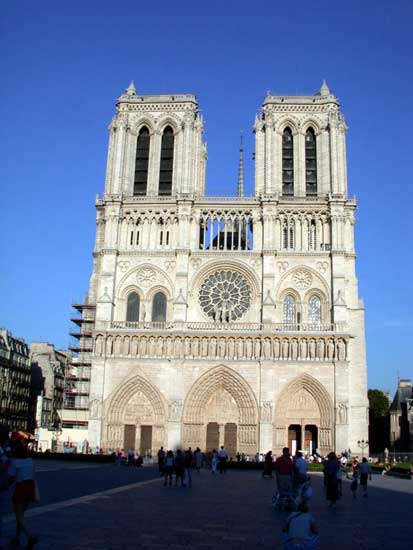
The history of the cathedral
As soon as he was elected, in 1160, Bishop Maurice de Sully undertook the works for the building of his new cathedral, the first stone of which was laid in 1163.
When the building site opened, France experienced a population explosion and an economic growth, and the people could enjoy peace, prosperity and a dramatic religious and intellectual renewal.
Once the choir was consecrated in 1163, important religious and political events - related to the importance of Paris in the French kingdom - took place under its vaults: the first Te Deum were sung after Philip-Augustus' victories , the Crown of Thorns was greeted by King Saint Louis, the first Estates General were opened by Philip IV 'the Fair'. From that time onwards, the history of the cathedral was closely linked to French history.
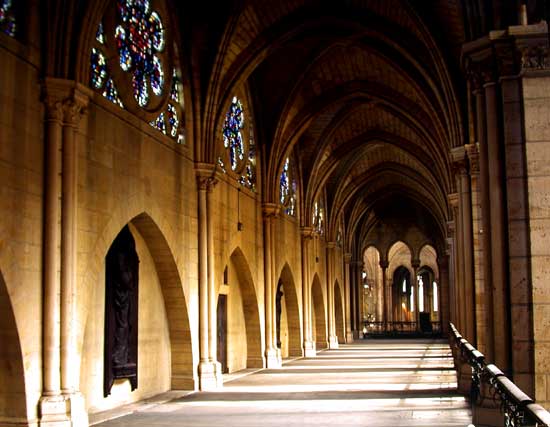
During the 17th and 18th centuries, Notre-Dame was the very place to celebrate royal grandeur: some more victories, funeral services, etc. But gothic style was no longer appreciated and the canons did not hesitate to have the stained glass pulled down and replaced by clear glass that let more light inside. In order to complete his father's vow, Louis XIV had the choir redecorated in baroque style. The Revolution had a Te Deum sung in Notre-Dame after the people had stormed the Bastille, but in 1793 the revolutionaries destroyed the statues which are on each side of the doors and those of the gallery of Kings, and transformed the cathedral into a temple to Reason.
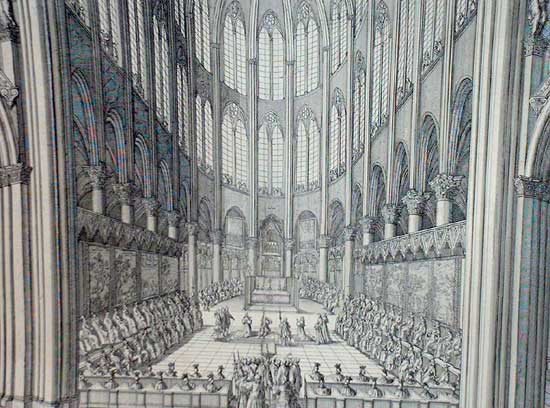
The cathedral was rededicated under the Consulat, but it was in such disrepair that on Napoleon's coronation ceremony, the stonework of the church had to be festooned with draperies to hide its misery. Thanks to the romantic movement and the return of prosperity, the cathedral was seen in a new light and its restoration was entrusted to Jean-Baptiste Lassus and Eugene Viollet-le-Duc. Along with this restoration, the Ile-de-la-Cite was reorganised by Haussmann who cleared the place all around Notre-Dame, which is now at the end of a huge square.
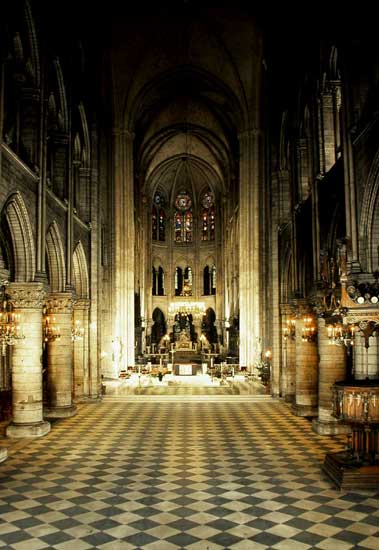
Through the 20th century, Notre-Dame was still a prestigious building and the State contributed to repairs that were needed. Considered as the 'Cathedral of France,' ceremonies marking the end of the two World Wars took place under its vaults, as well as funerals paying honour to chiefs of State.
Notre-Dame is both a place of prayer and meditation and the place where all dramatic national and religious events are celebrated.
Origins
The present cathedral is not the first building elevated on this spot.
Remains of a votive pier bearing sculptures dating back to the reign of Emperor Tiberius were found under the choir (they are now housed in the Museum of the Middle Ages), and it can be asserted that a temple dedicated to Roman and Gallic divinities stood at the eastern part of the Ile-de-la-Cite. This is not surprising knowing that churches were very often built on the site of old temples: the Church went into the habit of allowing evangelised people to go to their prior place of worship which were given Christian signification.
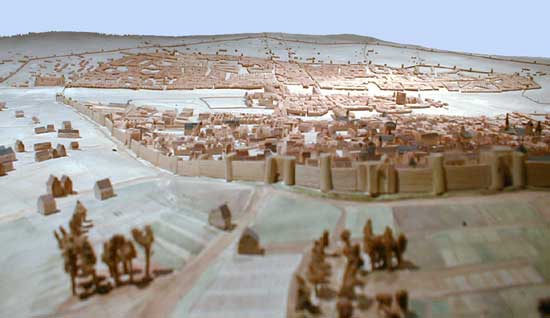
Some other excavations were carried out more recently: they revealed fragments of antique mosaics, columns and capitals as well as a Merovingian capital, and the walls of a church that had five naves similar to a Constantinian basilica (4th century). It is difficult to comme to a conclusion. Some may assume that the first large cathedral dedicated to Saint Steven was elevated in the 4th century and had undergone later alterations; others may think that it was elevated in the 7th century with older elements on a basilical scheme that was no longer in use; or it might have been rebuilt in the Merovingian period, according to the scheme of a previous church.
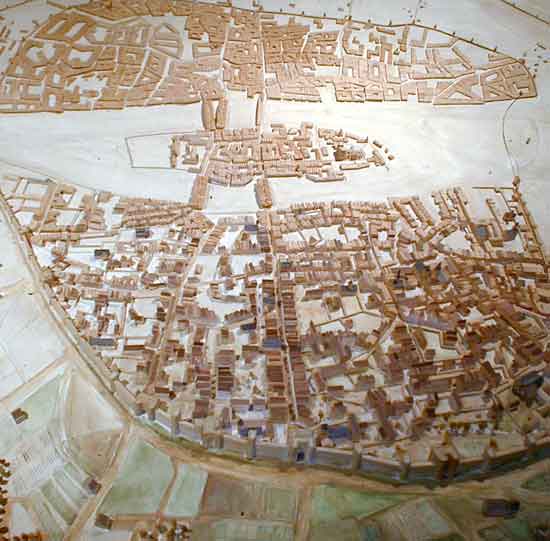
However, in the 12th century, it was essential to renovate a building that had become timeworn.
Etienne de Garlande, the Archdeacon of Paris, had some important works done to the old building, and ordered a new portal dedicated to the Virgin Mary that was later put in place in the Saint Anne portal of the new cathedral.
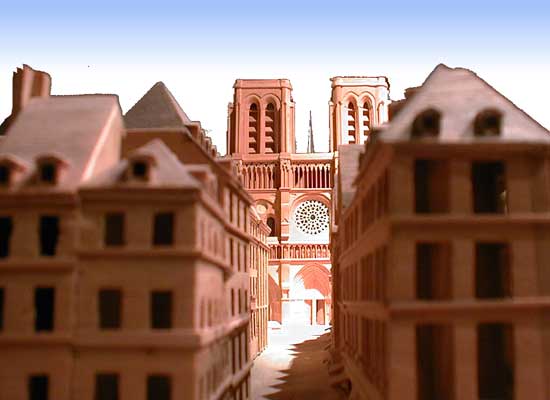
One must not imagine that, in the 12th century, the faithful were in front of only one building. On the northern part, next to the cathedral, there was already a baptistery, 'Saint-Jean-le-rond,' which was mentioned in texts dating back to the 6th century, and a close with many houses for the canons. Furthermore, on the eastern part of the island, there was also the bishop's palace and a hospital.
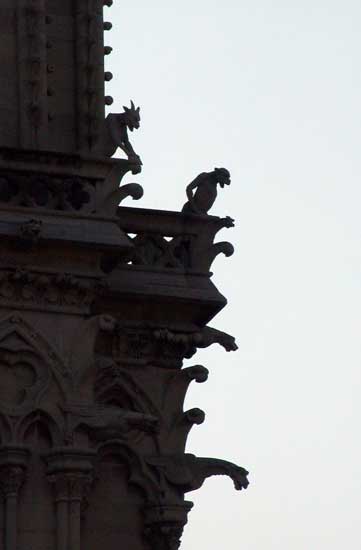
Building (12th-14th centuries)
12th, 13th, 14th centuries.
12th century: First gothic style.
When Maurice de Sully was elected by the canons in 1160, the large movement of cathedral reconstruction had already begun. In Chartres the 'Royal Portal' of the cathedral had just been erected. Some dioceses such as Sens, Noyon, Senlis and Laon had already undergone the works for a new cathedral. In the North of Paris, Abbott Suger who rebuilt the choir of Saint Denis Abbey in the new French style, was the initiator of this movement. (This French style was called Gothic after the Renaissance, when people were so fond of Greek and Roman buildings that they despised 'barbarian' medieval churches.)
One can think that the canons chose Maurice de Sully as the new bishop not only because he was gifted as a pastor, thus following King Louis VII advice, but also because of his project of rebuilding the cathedral: though the old Saint Steven cathedral had been repaired, it still looked old fashioned.
The building of the cathedral is part of a large overall plan. First, the bishop had to gain land in order to move the apse of the new cathedral towards the east.He undertook extensive work to link the Ile-de-la-Cite to a small island located on the east, and to have the soil stabilised before building, thus, he was able to establish a 'parvis' (square) where processions could take place.
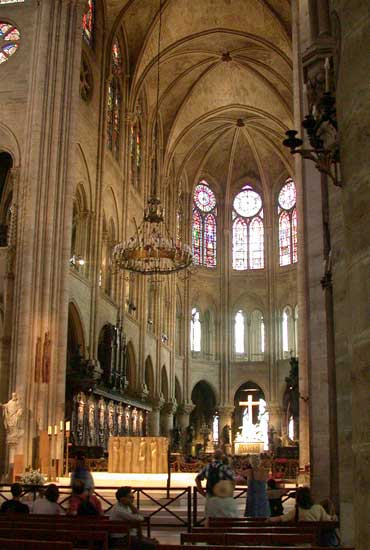
He also expropriated houses to make room for the street 'rue Neuve Notre-Dame,' which was six meters wide, and became the widest Parisian medieval street (its limits are marked on the pavement with white flagstones). The baptistery and the canons' houses remained located at the north but the bishop's palace and the hospital, called 'Hotel-Dieu', had to be relocated to the south, along the river Seine.
With five naves, the plan of the new cathedral took after that of the old basilica, but on a larger scale: 128 metres in length, 12.50 metres in width for the central nave, 40 metres in the whole width and 33 under the vault. Notre-Dame in Paris was the largest religious building in Europe in the 12th century.
In his plan, the architect eliminated all protruding elements in the outer wall. The transept is not asserted in the floor plan, and the choir with its double ambulatory has no radiating chapels. At the outset, the vertical section was reflecting a four storey elevation with arcades, galleries, rose windows opening onto the loft of the galleries, and small upper windows. On the west side, the building is closed by a facade that has no protruding elements either, with the two towers on the same line as the central part.
The first stone of the choir was laid in 1163. The work having been conducted at a remarkable speed, the new high altar was consecrated in 1182 in the presence of the Pope's legate. Then, the old church could be destroyed and the masons carried on the work for the nave (that was usual in the Middle Ages. People did not demolish the previous church first, as religious services had to go on every day while the new church was rising. The work site could progress only when the choir was in use).

The covering of the choir and of the nave is made of cross-ribbed vaults defining six compartments in a square; the covering of the side-aisle is quadripatite; in the curved part of the ambulatory, the architect chose a particular location of the columns in order to divide the vaulting into five parts, defining triangles. This way of vaulting enhances the sturdiness of the building and creates an impression of perfect magnificence.
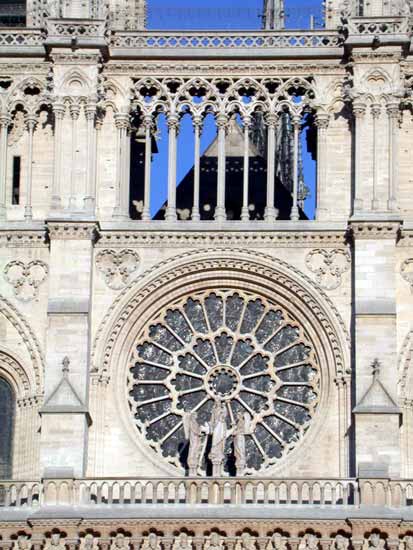
Undoubtedly, a second architect carried on the work in the nave, making large use of detached or 'en delit' (placed contrary to their stratum in the quarry) shafts and pilasters, thus gaining space in the width of the openings in the galleries and emphasising the impression of height. The nave was not yet completed when the site was entrusted to a third master who erected the facade up to the level of the balustrade above the 'Kings Gallery.'
Then, in the 1220s, a fourth master completed the nave and joined it to the facade. Influenced by the new Chartres Cathedral, he abandoned the drum columns and replaced them with columns surrounded with a cluster of shafts, but he did not interrupt the unity of the covering and went on building sexpartite vaults, though elsewhere, some master builders began to elevate quadripartite vaults on a rectangular plan.
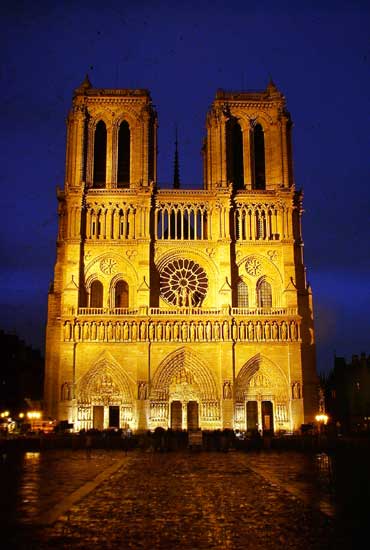
Modifications (17th-18th centuries)
No noticeable changes have taken place in the cathedral from the 14th to the 18th century except for the gift of many religious paintings, the most significant being the "Grands Mays" offered by the Parisian goldsmith guild each year on the first of May This collection of paintings gathered from 1630 to 1707 was dispersed during the French Revolution and only thirteen of them have taken place anew inside the cathedral.
During this period, the most important alteration consisted in the transformation of the choir by King Louis XIV at the beginning of the 18th century in order to complete his father's Vow.
In 1638, Louis XIII had decided to put his kingdom under the protection of the Virgin Mary, and thus had ordered that the Assumption day, on August 15th , should be celebrated as a solemn feast all over France. Moreover, he had wished Notre-Dame Cathedral choir to be completely redecorated in a style suiting the art trend of the time; However, no works had been undertaken until 1698 when Robert de Cotte (architect of the Versailles Palace present chapel) was appointed to carry out the project.
To-day only the marble pavement, the stall woodcraft, and the Pieta, carved by Nicolas Coustou at the bottom of the choir, are left from this period as well as some statues : one of King Louis XIII offering the French crown to Mary (work of Guillaume Coustou) , another one of King Louis XIV, and those of the angels carrying the tools of the Passion carved by Antoine Coysevox .
In order to give back its medieval aspect to the choir, the restorer, Viollet-le-Duc, did not hesitate to remove the marble plates which were covering the pillars, capitals, and arcades.
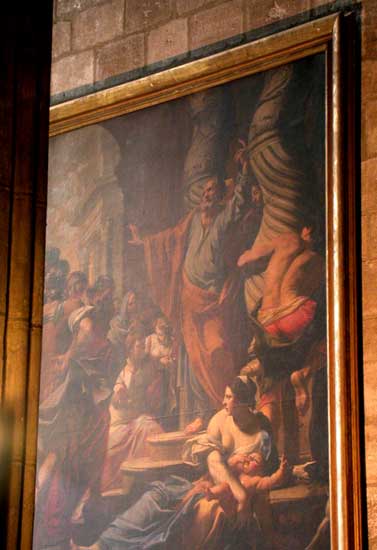
In the 18th century, the canons commissioned Soufflot (the architect of the Pantheon) to enlarge the central portal to let major processions and their gigantic canopies through. The 'Beau Dieu' (The statue of Jesus on the central pier) was taken away, the lower lintel was dismantled, along with the middle part of the upper lintel. Viollet-le-Duc also gave back its original aspect to this portal.
Lastly, in the middle of the 18th century, the cathedral canons, eager to let more light inside the building, had the magnificent Middle Ages stained glasses pulled down and replaced with clear glasses. Only the three rose windows kept their stained glasses.
Through the French Revolution
In 1793, due to the prohibition of religious observances, the cathedral was converted into a temple to Reason, and the full-length jamb statues of the portals, as well as those of the Gallery of Kings (mistaken for French kings) were broken into pieces.
The objects of the treasury were melted down while paintings and statues were scattered around.
Fortunately, Alexandre Lenoir, a sensible young painter, had the excellent idea to gather the most interesting items in the Museum of National Monuments that he had just created for that purpose. Thanks to him, the statues of the baroque choir and many 'grands Mays' have been saved.
The cathedral was rededicated under the Consulat, in 1801. Three years later, Napoleon was crowned Emperor in the cathedral in the presence of Pope Pius VII.
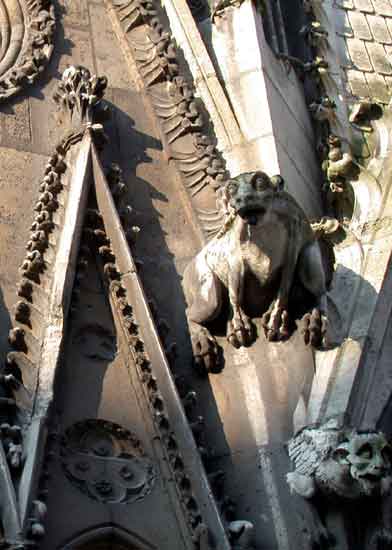
The 19th century restoration
In the 19th century French people rediscovered their extraordinary rich gothic heritage, thanks to the romantic movement (Chateaubriand wrote 'Le Genie du christianisme' in 1801, and, above all, Hugo's novel 'Notre-Dame de Paris' was published in 1821), to the foundation of the Societe francaise d'archeologie (French Society for Archeology), and to the Service des Monuments historiques (Historical Monuments Service).
This movement set the tone for gothic monument revaluation into public opinion, and it ended in the restoration of Notre-Dame Cathedral, which had suffered disrepair during the classic era, vandalism during the French Revolution, and the shell of which was damaged. Funds were voted by the Parliament and two architects were appointed: Jean-Baptiste Lassus and Eugene Viollet-le-Duc. The works began in 1847. After Lassus' death in 1857, Viollet-le-Duc was left the only master builder.
One cannot easily imagine how enormous the task was; it was carried on carefully, though one could criticise Viollet-le-Duc for having renovated the monument too much:
- all weak stones were replaced,
- all broken statues were carved anew (Gallery of Kings, full-length jamb statues, etc.) by Geoffroy-Dechaume's workshop,
- the central portal of the Last Judgement that had been altered by Soufflot was reconstructed,
- the spire that had been dismantled in 1792 was not rebuilt in its previous state but in a more sound way,
- the south rose window had been deposited and put back in place after the tracery had been changed and a new central medallion created' in the same way, the west rose window was fixed with new traceries,
- the fantastic bestiary was recreated,
- the 12th century four storey elevation that had disappeared during the 13th century works was restored in the bays next to the crossing, though the design and the location of those rose-windows were not quite exact,
- the statues of Louis XIII Vow were put back in place, but Viollet-le-Duc did away with the marble plates that were covering the curved part of the sanctuary.
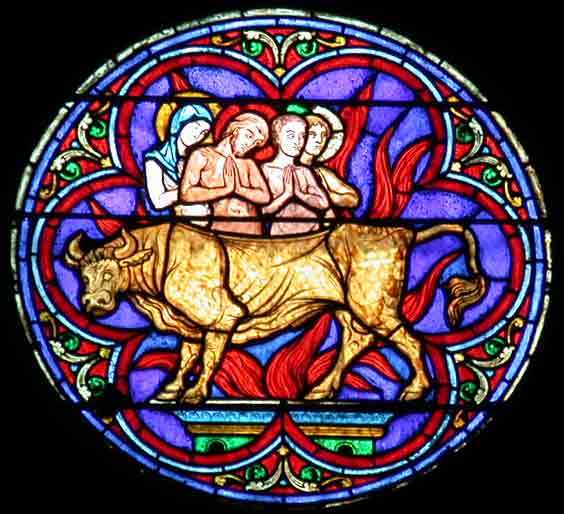
Moreover, Viollet-le-Duc was concerned with the coloured atmosphere of the building: he had large wall paintings executed in the ambulatory chapels and ordered the best specialists tomake new stained glasses for the high windows in the choir, the windows in the ambulatory chapels, and in the transept clerestories.
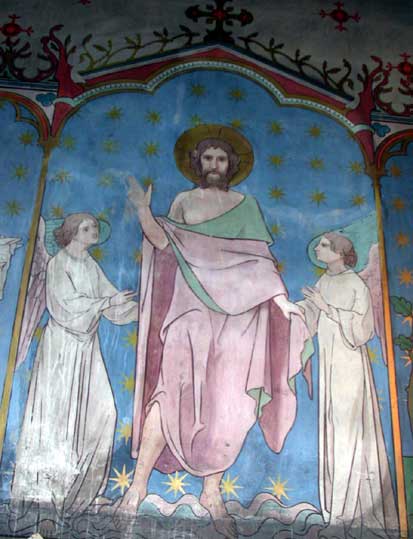
As he wanted to get control of everything, he also refurnished the cathedral. He drew plans for the new bronze font made by Bachelet and for a new altar. He studied archeology in order to design some new vessels (ciborium and chalices) and crosses.
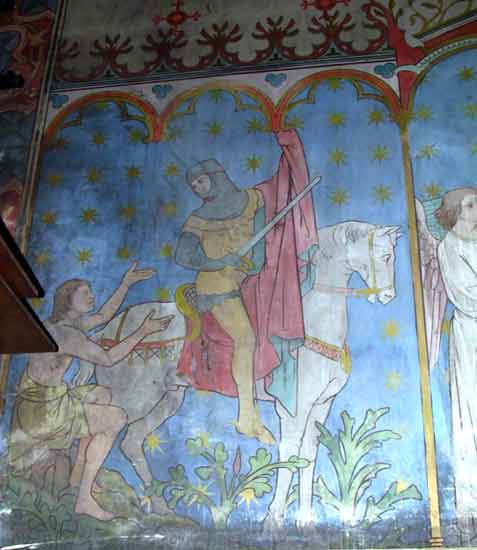
He also wanted to take the cathedral environment into account, but could not do more than to build the sacristy and the presbytery adjoining the south side.
These gigantic works were only completed in 1864.
Throug the 20th century
The Cathedral Notre-Dame in Paris has become an emblematic building in France and all the Governments of the Fifth Republic have contributed to its improvement and maintenance. Attesting to this, the cleaning of the facades between 1968 and 1970, and the great new campaign of works launched in 1988 and entrusted to Bernard FONQUERNIE, Architecte en chef des Monuments Historiques. This campaign is going on at the moment on the north side of the building and already allows us to enjoy the magnificent restoration of the occidental facade.
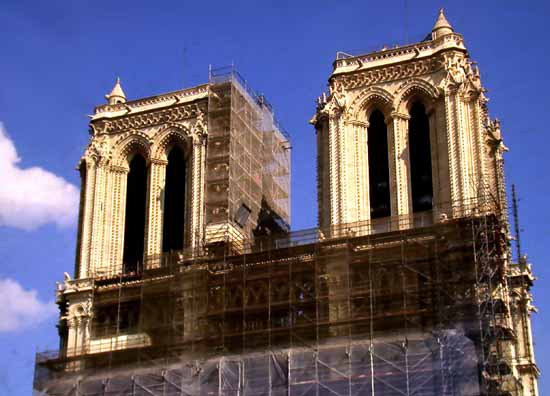
In 1965 works were undertaken to create the archeological crypt under the open square in front of the Cathedral. These works enabled a better understanding of the site through the knowledge of what existed in the Middle Ages.
The inside of the Cathedral has also known important adjustments. First, the glass of the high windows of the nave and the openings of the tribunes was entrusted to Jacques le CHEVALIER. In the sixties, he has given back to Notre-Dame a more gentle lighting, through modern and abstract stained glass. The blues and the reds are especially well harmonised with the colours of the 13th century stained glass.

The furniture was also enriched: since Vatican II reforms, the main altar is placed at the crossing of the transept. The present one is a work by Paul TOURET in 1989; on the front, it outlines the four great prophets, and on the sides the four evangelists. Let us notice that this decoration is showing a certain continuity, as, in the middle of the south clerestory stained glass windows, the four evangelists can be seen resting on the shoulders of the four great prophets.
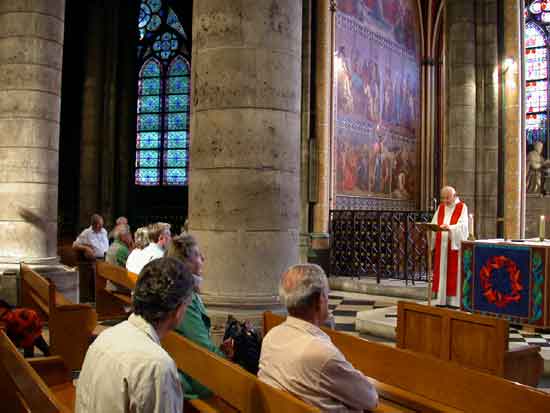
As for the Pieta, it found again its whole meaning thanks to the great gilded bronze cross made by Marc COUTURIER and placed in 1994.
The organ itself gained by the addition of computerisation with the most modern techniques